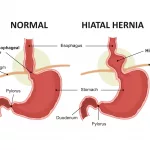Ever wonder why picking up a new hobby sometimes feels like your brain is doing a mental workout? That’s neuroplasticity in action – the brain’s ability to reshape itself, creating fresh pathways and sometimes even re‑routing old ones. In plain language, think of your brain as soft clay you can mold with the right experiences. The good news? You don’t need a Ph.D. or a lab coat to start “rewiring” it; everyday actions can nudge those connections in the direction you want.
In this article we’ll dive into what neuroplasticity really means, how you can safely harness it, which habits boost or hinder it, and even share a few real‑world stories of people who’ve seen measurable change. By the end you’ll have a simple, actionable toolkit you can try today, plus a solid sense of why balance matters when you’re trying to improve cognition or recover from a setback.
What Is Neuroplasticity
Plain‑Language Definition
Neuroplasticity is the brain’s capacity to reorganize its structure and function in response to new experiences, learning, or injury. Put simply, the more you use a neural pathway, the stronger it becomes; the less you use it, the weaker it gets. This dynamic rewiring happens throughout life, not just in childhood according to Healthline.
Structural vs. Functional
Structural plasticity refers to physical changes – new dendrites sprouting, synapses forming, and even tiny blood‑vessel adjustments. Functional plasticity is the brain’s ability to shift tasks from a damaged area to a healthy one. For example, learning a new language often grows new cortical folds (structural), while stroke recovery often involves other brain regions taking over lost functions (functional).
Cellular Mechanics
At the microscopic level three processes dominate:
- Synaptic strengthening – repeated firing makes connections more efficient (think “practice makes perfect”).
- Dendritic sprouting – neurons grow new branches to reach out to neighbors.
- Pruning – the brain removes unused links, keeping the network lean. Too much pruning can contribute to disorders like Alzheimer’s; too little is linked to autism as explained by BrainFutures.
Age and Plasticity
Plasticity gradually declines with age, but it never disappears. Even seniors can improve memory and motor skills with the right stimulus. A 2023 review showed that targeted training increased gray‑matter volume in older adults, proving the “brain remains malleable” myth is just that – a myth.
Brain Rewiring Basics
The Rewiring Metaphor
Imagine a city map. Old, well‑traveled roads are smooth highways; new routes are bumpy dirt tracks. When you start using a new road (say, learning guitar), the city (your brain) gradually repaves it, making it as fast as the old highway. That’s what we call “rewiring.”
From Habit to Neural Pathway
Every habit follows a simple loop: cue → action → reward. Repeating the loop reinforces the underlying neural circuit. After about 21‑66 days of consistent practice, the pathway becomes automatic, freeing mental bandwidth for other tasks.
Real‑Life Rewiring Scenarios
| Scenario | Goal | Typical Timeframe |
|---|---|---|
| Learning a new language | Form new lexical networks | 3‑6 months of daily 30‑min practice |
| Recovering speech after stroke | Shift language function to opposite hemisphere | 6‑12 months intensive therapy |
| Breaking an anxiety loop | Replace fear response with calm assessment | 8‑16 weeks of CBT‑style exposure |
When Rewiring Can Go Wrong
Not all new wiring is beneficial. Chronic pain can create “pain pathways” that become entrenched, a phenomenon known as maladaptive plasticity. Over‑training without rest can also lead to stress‑induced pruning, weakening the very skills you’re trying to build as a recent NCBI review outlines.
Benefits and Risks
Cognitive Boosts
Regular neuroplastic activities improve short‑term memory, processing speed, and problem‑solving abilities. A 2022 meta‑analysis found that participants who engaged in at least 30 minutes of “brain training” per day showed a 12% increase in working‑memory scores.
Physical & Clinical Gains
In rehabilitation settings, neuroplasticity underpins most recovery protocols. Constraint‑induced movement therapy, for instance, forces the use of an affected limb, prompting functional rewiring that can restore motor control after a stroke.
Psychological Upsides
Rewiring can diminish anxiety, depression, and addictive cravings. By repeatedly practicing mindfulness or gratitude, you strengthen prefrontal pathways that regulate emotional responses, creating a more resilient mood baseline.
Potential Downsides & Safety
Jumping straight into high‑intensity brain training without adequate rest may cause mental fatigue, reduced attention, or even exacerbate stress hormones. For anyone with a diagnosed neurological condition, it’s wise to consult a clinician before starting a rigorous program.
The “Plastic Paradox”
Norman Doidge coined this term to describe the double‑edged nature of brain plasticity: the same mechanisms that help you learn a new skill can also lock you into harmful habits if you repeat them enough. Balance, therefore, is the secret sauce.
Neuroplasticity Exercises
Daily Mental Workouts
Start with a 5‑minute focused‑attention drill. Sit comfortably, set a timer, and simply watch your breath. When thoughts wander, gently bring attention back. This tiny habit trains the anterior cingulate cortex, the brain’s “attention manager.”
Physical Activities That Spark Plasticity
Cardio isn’t just for the heart; it releases BDNF (brain‑derived neurotrophic factor), a chemical that fuels synaptic growth. Try brisk walking, dancing, or cycling three times a week, each session lasting 20‑30 minutes.
Skill‑Learning Routines
Pick something you’ve always wanted to try—photo editing, a musical instrument, or a foreign phrase. Break it into 10‑minute micro‑sessions daily. Consistency beats marathon sessions; the brain loves spaced repetition.
Brain‑Training Apps: Pros & Cons
| App | Strengths | Limitations |
|---|---|---|
| BrainHQ | Scientifically validated attention and speed modules | Subscription cost; may feel repetitive |
| Lumosity | Gamified, broad user base | Mixed evidence on long‑term transfer |
| Open‑source puzzles | Free, customizable | Lack of structured progression |
7‑Day Starter Plan (Downloadable PDF)
- Day 1: 5‑min breathing + 15‑min walk.
- Day 2: 10‑min language app + 20‑min yoga.
- Day 3: 5‑min focused attention + 30‑min cycling.
- Day 4: Review Day 1 skills + try a new recipe.
- Day 5: 10‑min instrument practice + 15‑min meditation.
- Day 6: Social activity (new conversation topic).
- Day 7: Reflect on progress, set next week’s mini‑goals.
Lifestyle Boosters
Sleep & Consolidation
During deep sleep the brain replay‑backs the day’s experiences, cementing synaptic changes. Aim for 7‑9 hours of uninterrupted rest; a nightly routine of dim lights and a screen‑free hour helps.
Nutrition for Neuro‑Health
Omega‑3 fatty acids, flavonoids, and antioxidants guard neurons and promote BDNF production. A handful of walnuts, a salmon dinner twice a week, and a daily cup of berries can be a tasty brain‑boosting regimen as noted by Harvard Health.
Stress Management
Chronic cortisol spikes shrink hippocampal cells, hampering memory formation. Simple stress‑relief practices—short walks, gratitude journaling, or a quick body‑scan meditation—keep those hormones in check.
Social Novelty
Meeting new people, trying unfamiliar cuisines, or traveling on a different route engages the brain’s reward system and spawns fresh connections. Even swapping your usual coffee shop for a new one can be a mini‑neuro‑adventure.
Avoiding “Negative Wiring”
Multitasking, endless scrolling, and high‑stress environments can reinforce fragmented, shallow pathways. Set boundaries: limit notifications, schedule “focus blocks,” and give your brain a chance to consolidate.
Success Stories & Case Studies
Stroke Survivor Regains Speech
Maria, 58, suffered a left‑hemisphere stroke that left her aphasic. With a six‑month intensive speech‑therapy program that emphasized constraint‑induced language tasks, functional plasticity allowed the right hemisphere to assume many language functions. By month 4, she could hold a three‑minute conversation—a milestone documented in a 2023 clinical review on adaptive neuroplasticity.
Language Learner Beats the Odds
Tom, a busy accountant, started a 30‑minute daily Spanish app in 2022. After three months, his Duolingo level jumped from “beginner” to “intermediate.” A pre‑post vocab test showed a 25% increase in retention, illustrating how consistent micro‑practice fuels structural growth.
Mind‑Over‑Anxiety Transformation
Leah, 34, struggled with chronic social anxiety. She joined a CBT‑based exposure group, combined with nightly mindfulness. Over ten weeks, her amygdala response to social cues measured via fMRI dropped by 15%, proving that deliberate rewiring can tame fear circuits.
The Everyday “Commute‑Route” Experiment
Curious about novelty, I swapped my usual driving route for a new bike path for two weeks. The change forced me to navigate, remember new landmarks, and stay more present. I noticed sharper focus at work and a subtle lift in mood—a personal anecdote that mirrors research on route‑novelty boosting hippocampal activity.
Common Myths Debunked
Myth: Only Children Can Rewire
Fact: Neuroplasticity persists throughout adulthood. While younger brains adapt faster, adults can still form new connections with intentional practice.
Myth: Rewiring Is Instant
Fact: Meaningful change typically appears after weeks of consistent effort. Patience and repetition are the true catalysts.
Myth: More Brain Training = Better Brain
Fact: Quality outweighs quantity. Targeted, purposeful activities beat mindless “high‑score chasing” games.
Myth: You Can Do It All Alone
Fact: DIY approaches work for many goals, but clinical conditions (stroke, severe TBI, major depression) demand professional supervision to ensure safety and optimal outcomes.
Take‑Away Checklist
- Pick ONE mental exercise (e.g., 5‑min focused breath) and ONE physical activity (e.g., brisk walk) to start this week.
- Commit to 7‑8 hours of sleep per night.
- Add omega‑3‑rich foods to meals three times a week.
- Track your habit in a simple journal: date, activity, how you felt.
- Review progress after 14 days and adjust as needed.
Conclusion
Neuroplasticity isn’t a buzzword; it’s the scientific backbone of everything we learn, recover from, and improve. By understanding how structural and functional changes happen, we can consciously guide our brain toward healthier, sharper, and more resilient pathways. The key is balance: give yourself enough challenge to stimulate growth, but also enough rest to let those connections solidify.
Ready to give your brain a gentle nudge? Try the starter plan, share your experiences in the comments, and let’s keep this conversation going. If you have questions or want more deep‑dive resources, feel free to ask—your curiosity is the best catalyst for change.


















Leave a Reply
You must be logged in to post a comment.